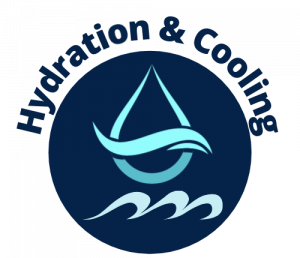Beat the Asheville heat with our guide on preventing heat-related injuries in youth sports. Learn essential safety measures for athletes, coaches, and parents.
_______________________________
Heat-Related Safety for Youth Sports in Asheville: Prevention Guide
Asheville’s climate poses unique challenges for youth athletes. With summer temperatures often reaching the high 80s and humidity levels that can make it feel much hotter, heat-related safety is a crucial concern for local sports programs. Heat exhaustion and heat stroke represent serious risks that can affect performance and, more importantly, endanger young athletes’ health. This guide offers practical solutions specifically tailored to Asheville’s climate conditions, helping coaches, parents, and athletic directors create safer environments for youth sports. Incorporating heat stress prevention techniques, such as ensuring regular water breaks and scheduling practices during cooler parts of the day, can significantly mitigate the risks associated with high temperatures. Additionally, educating athletes on recognizing early signs of heat-related illnesses empowers them to take proactive measures for their well-being. By prioritizing these strategies, the local sports community can foster a culture of safety and health for all participants.
Understanding Asheville’s Climate Challenges
Nestled in the Blue Ridge Mountains, Asheville experiences a climate that combines mountain weather patterns with surprising heat intensity during summer months. While mornings might start cool, afternoon practices can quickly become dangerously hot. The city’s elevation of around 2,200 feet creates interesting weather dynamics:
Unlike coastal areas, Asheville’s heat often comes with lower humidity than eastern North Carolina, but when humidity does spike, the mountain valleys can trap moisture, creating particularly uncomfortable conditions. July and August typically see the hottest temperatures, coinciding with pre-season training for many fall sports – precisely when athletes are still acclimating to physical activity in the heat.
Essential Heat Safety Measures for Asheville Youth Sports
The mountain climate requires specific approaches to heat safety that address Asheville’s unique conditions:
Hydration Strategies That Work
Proper hydration remains the cornerstone of heat safety. For Asheville sports programs, implementing structured hydration breaks every 15-20 minutes during practice is essential. Having mobile water stations accessible from different areas of the practice field ensures athletes can hydrate quickly without long walks that cut into valuable practice time.
Team water tankers with multiple drinking stations prove particularly effective for larger teams, allowing several athletes to hydrate simultaneously. For smaller teams or practice areas with limited space, portable water cooler stands strategically placed around the facility provide convenient access points.
Creating Cooling Zones
Asheville’s direct sun exposure at higher elevations makes shade critically important. Creating designated cooling zones where athletes can temporarily escape the heat helps prevent overheating. These zones should include:
Outdoor misting fans that can reduce the ambient temperature by 10-30°F, providing immediate relief during intense practice sessions. Portable canopies or tents with adequate seating allow athletes to cool down properly during breaks rather than sitting directly on hot surfaces. Ideally, these cooling zones should be positioned to catch any mountain breezes that might provide natural cooling.
Timing Practices Strategically
Working with Asheville’s climate rather than against it means scheduling practices during cooler parts of the day. Early morning sessions (before 10 AM) take advantage of cooler mountain air, while evening practices (after 6 PM) avoid the peak heat hours. When practices must occur during hotter periods, coaches should adjust intensity levels and incorporate more frequent breaks.
Recognizing Heat-Related Illness
Training coaches, staff, and even team captains to recognize the early signs of heat-related illness can prevent dangerous situations from escalating. Watch for symptoms including:
Excessive fatigue or weakness that seems disproportionate to the activity level. Headache, dizziness, or confusion. Nausea or vomiting. Skin that feels unusually hot and dry or, conversely, cold and clammy. Rapid heart rate that doesn’t slow during rest periods.
Equipment Solutions for Asheville Sports Programs
Investing in the right cooling and hydration equipment makes implementing safety protocols much easier. For Asheville’s specific climate challenges, consider:
High-capacity water tankers (35-100 gallons) that can serve entire teams throughout extended practice sessions without requiring refills. Portable misting systems that can be quickly repositioned based on changing sun patterns across mountain-based fields. Multiple smaller water stations distributed throughout practice areas rather than centralized hydration points, reducing crowding and wait times during breaks.
Take Action: Protect Your Athletes from Heat-Related Risks
Don’t wait for a heat-related emergency to implement proper safety measures. Contact our team at Hydration & Cooling to discuss customized solutions for your Asheville sports program. Our local expertise means we understand the specific challenges you face and can recommend equipment configurations that work for your particular facility and team size.
Call us today at 828-820-8600 to speak with our Asheville-based specialists about creating a comprehensive heat safety plan for your youth sports program. When life gets hot, we do cool!
FAQ Schema Markup Suggestion
